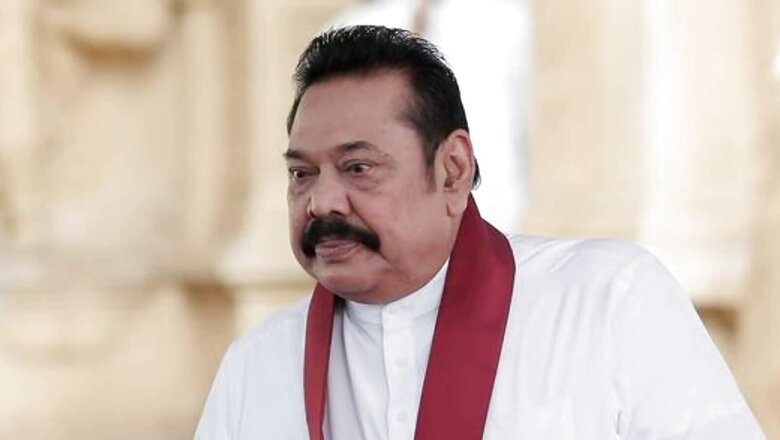
views
Lately, India’s immediate neighbourhood is in the doldrums. From the mass protests, killings, and use of arms over the military coup in Myanmar about a year back to the recent political and economic conundrum unfolding in Pakistan; from the fresh rise of COVID-19 cases in Chinese cities like Shanghai and Shenzhen to the epicentre of the region’s much talked about economic crisis emerging from Sri Lanka—India has its hands full in dealing with the new foreign policy dynamics and economic diplomacy in all directions.
Sri Lanka faces its worst economic crisis since its independence from British colonial rule in 1948—with visuals of prolonged power cuts, high inflation, and a lack of essential commodities. The 26-year long civil war that ended in 2009 had a major strain on Sri Lanka’s budget deficits and consequently, the global financial crisis of 2008 drained the country’s forex reserves hampering a large number of economic parameters crucial for the Lankan economy. Economic mismanagement by the successive Sri Lankan governments caused a twin deficit characterised by a budget shortfall along with current account deficits. Firstly, as an election promise, there were deep tax cuts enacted months before the COVID-19 pandemic. This led to a sharp decrease in the number of registered taxpayers between 2019 and 2020. Secondly, the government banned all fertiliser imports in 2021. Since most of these products were imported, the country had to switch to organic farming overnight which decreased food production and food imports went up.
Economic mismanagement by the successive Sri Lankan governments caused a twin deficit characterised by a budget shortfall along with current account deficits.
The last two decades saw a series of loans from the International Monetary Fund (IMF). In 2009, IMF extended a loan with the condition that budget deficits will be reduced to 5 percent of the GDP by 2011. With no improvement in growth or export, the country again went to the IMF in 2016 for another round of debt which stood at US $1.5 billion with some new clauses. The IMF package harmed the economy’s health, with a fall in growth rate from 5 percent in 2015 to 2.9 percent in 2019. During the same period, the government revenue also contracted from 14.1 percent to 12.6 percent of GDP.
Also Read: The Sri Lankan Collapse: Colombo Must Get Its Act Straight and Keep The China Card on a Leash
There is no denying that IMF debts come with a set of conditions which are often quite restrictive for the debtor nations. Despite Sri Lanka’s severe Balance of Payment (BOP) crisis, the country has been adamant in not seeking assistance from the IMF given their previous track record of faltering economic recovery. The alternate strategy was to seek assistance from the global rivals in the neighbourhood—China and India.
China: No longer the saviour
The COVID-19 pandemic has undoubtedly hurt the global economy in a multitude of ways, especially for smaller developing nations like Sri Lanka. In this context, it becomes particularly important for the regional economies to maintain a fine balance between their overall external debt and debt to China, especially for the BRI (Belt and Road Initiative) countries such as Sri Lanka. A few years back, the Chinese initiative drew much criticism when China Merchants Port Holding (CMPort) took over Sri Lanka’s Hambantota Port on a 99-year lease when Colombo wasn’t able to pay back a funding capital debt of about US$ 1.12 billion to China.
Many global players see Sri Lanka as a victim to China’s ‘debt-trap diplomacy’—which is quite a valid argument. Although China accounts for about only 6 percent of Sri Lanka’s outstanding external debt, China’s liquidation techniques and hidden debts in various projects reflect the problematic outcomes of Beijing’s economic imperialism. The ongoing economic crisis in Sri Lanka had caused Colombo to request for a moratorium on debt repayments to the visiting Chinese Foreign Minister in February 2022—stirring up the issue of ‘problematic Chinese debts’ once again in the global economic arena. The island nation also sought a new loan of approximately US$ 2.5 billion in March 2022.
The Chinese initiative drew much criticism when China Merchants Port Holding (CMPort) took over Sri Lanka’s Hambantota Port on a 99-year lease when Colombo wasn’t able to pay back a funding capital debt of about US$ 1.12 billion to China.
India: The new friend
In the last couple of years, Sri Lanka and India have been able to substantially strengthen their economic ties and remain amongst the largest trade partners for each other within the ambit of South Asian Association for Regional Cooperation (SAARC). Some major highlights of India’s financial package to Sri Lanka include—US$ 400 million worth of SAARC currency swap; deferral of Asian Clearing Union Settlement of US$ 515.2 million by two months and US$ 500 million for fuel procurement in Sri Lanka. In a groundbreaking move, New Delhi also extended a Line of Credit worth US$ 1 billion to Colombo to aid the procurement of food, medicines, and other essential commodities.
Unfortunately, but quite expectedly, there is no lack of competitive tones to the aid provided by India versus China at the cost of the Sri Lankan crisis. In fact, there are actual concerns regarding Beijing’s pressure on Colombo for a Free Trade Agreement (FTA) during such trying times. Former Prime Minister of Sri Lanka Ranil Wickremesinghe agreed that India has extended ‘maximum’ support to Sri Lanka and added “we will have to see the outcome of the support of India while New Delhi is still helping in non-financial ways”.
According to the Finance Ministry, about US$ 3 million worth of external assistance will be required over the next six months to restore supplies of essential goods and catalyse the recovery path for the economy.
Back to the IMF?
As thousands of Sri Lankans protest the current government for bringing this catastrophe to the nation, the big question that looms large is whether Colombo is inching closer to engaging with the IMF once again? Experts speculate that the Sri Lankan President removed his brother and Finance Minister Basil Rajapaksa as he was planning to visit the US to hold negotiations with the IMF—he was replaced by Ali Sabry, the former Justice Minister of Sri Lanka. On 12 April, the country declared that it was defaulting on its external debts to the tune of US$ 51 billion, pending an IMF bailout. According to the Finance Ministry, about US$ 3 million worth of external assistance will be required over the next six months to restore supplies of essential goods and catalyse the recovery path for the economy. The Minister intends to find this assistance through bridge financing, in the run-up to the talks with the IMF which is scheduled later this month. The IMF too had started its ‘technical-level engagement’ with the Finance Ministry.
Given Sri Lanka’s situation, there is no way out of this crisis than seeking substantial support from the IMF, which may entail some conditions related to budgetary cuts and trade openness amongst others. The other options of seeking huge loans from individual nations will always be inclusive of an agenda suitable to the creditor nations. Although such IMF directives may seem valid at this stage of the economy—it is for time to tell whether Sri Lanka’s engagement with the IMF will only be an antidote in the short-run or will it provide guidelines for a sustainable and inclusive recovery in Sri Lanka.
This article was first published on ORF.
Soumya Bhowmick is an Associate Fellow at the Centre for New Economic Diplomacy, Observer Research Foundation. the views expressed in this article are those of the author and do not represent the stand of this publication.
Read all the Latest Opinion News and Breaking News here




















Comments
0 comment